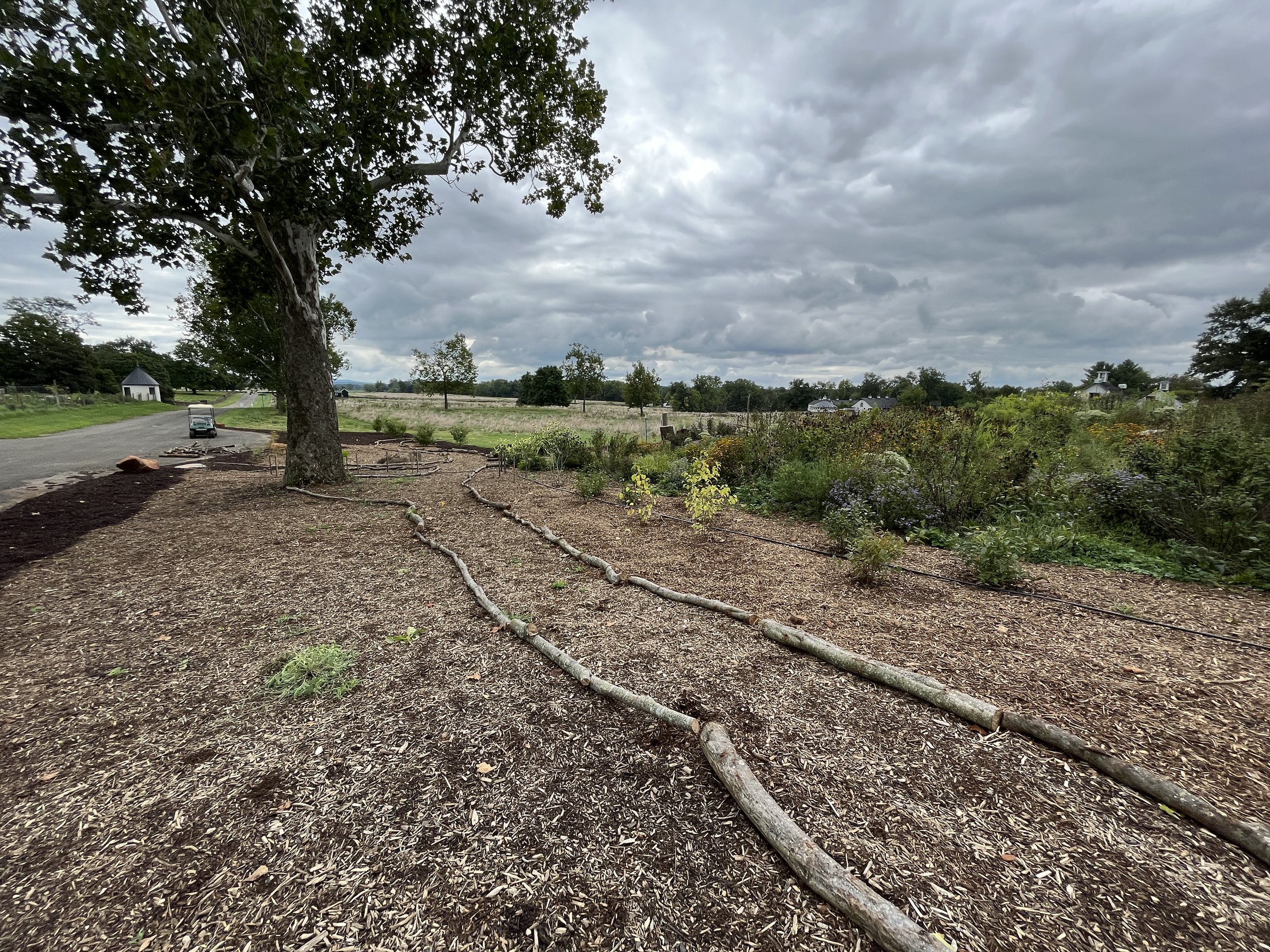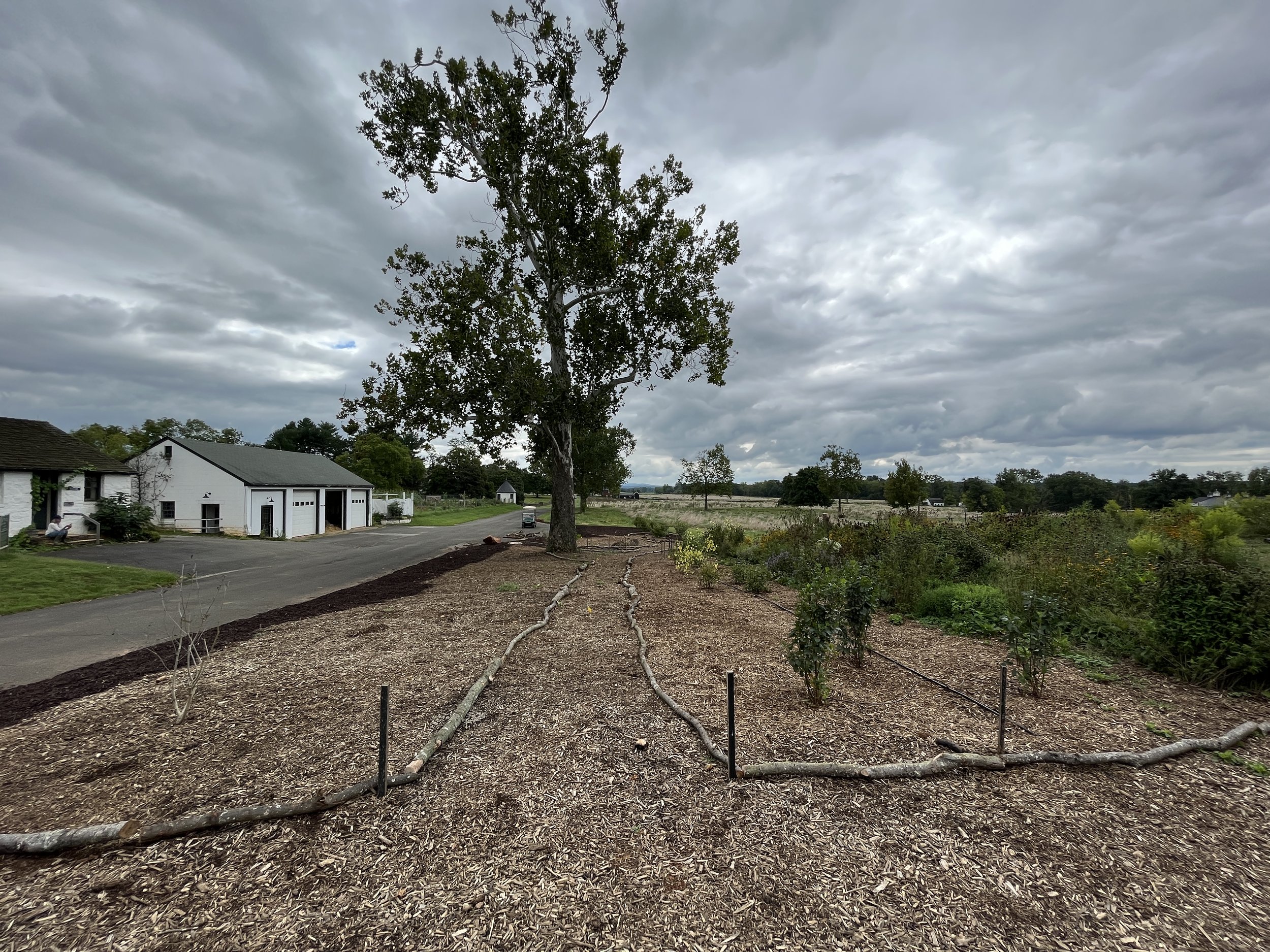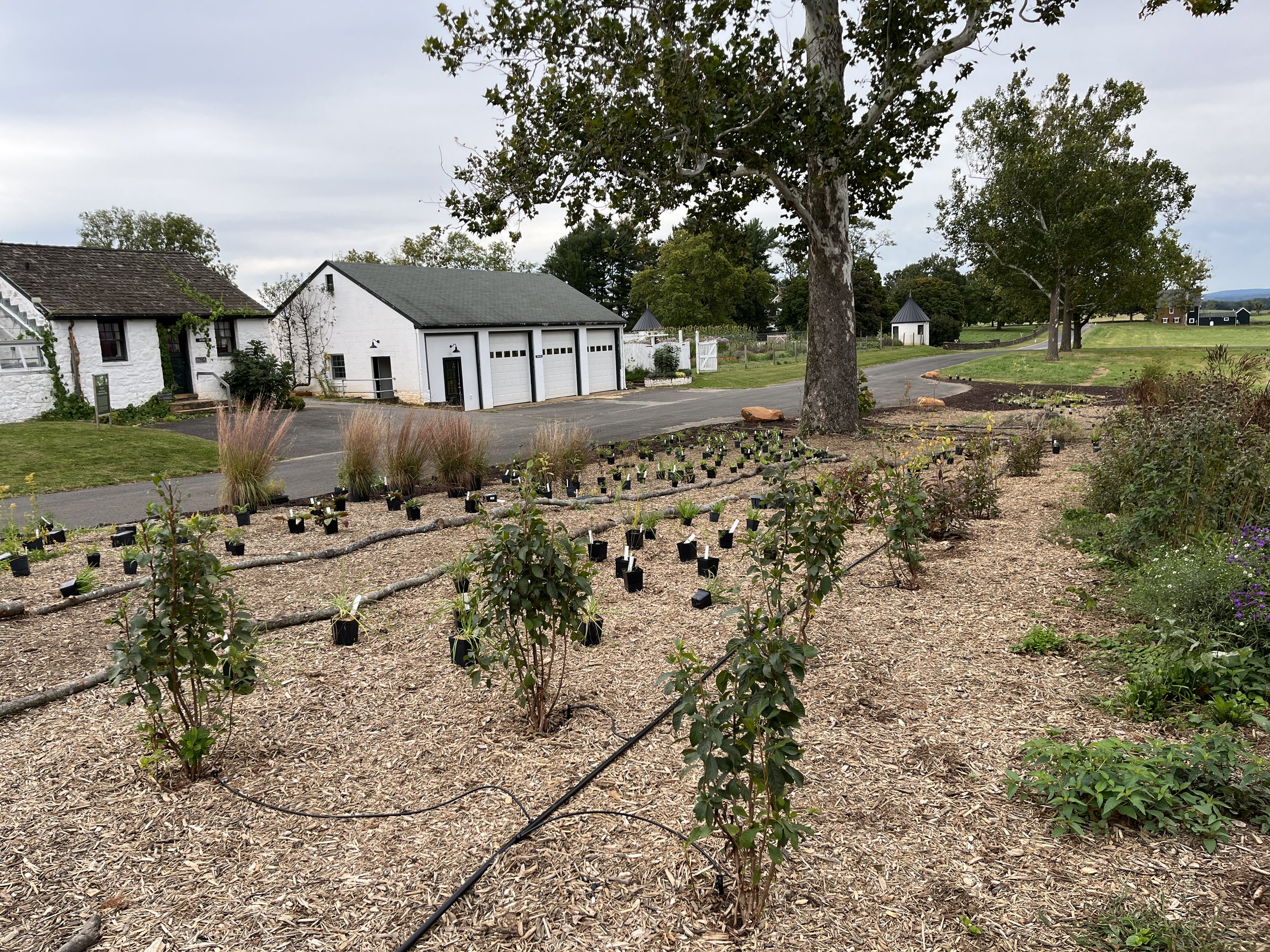Inviting in Nature: The Rokeby Habitat Garden
OSGF
Summer is a time that’s bursting with activity. The landscape is full of soaring butterflies, buzzing bees, and a host of birds and other critters. In this guest blog post, written by our Biodiversity Conservation Manager, learn about the creation of the Rokeby Wildlife Garden, which supports Oak Spring’s flora and fauna, and get a few tips on how to start your own wildlife garden.
When pondering how I wanted to open a blog post about creating wildlife gardens, I kept coming back to this thought: There is no one way to create a garden. A garden means something different to everyone. Though the Oxford dictionary defines it simply as a plot of ground where herbs, fruits, flowers or vegetables are grown, just ask anyone to describe an ideal garden and the vision will be wildly and beautifully unique. Some picture a kitchen herb garden filled with aromatic plants to adorn each meal. Others picture vibrant ornamentals like roses, peonies, or their favorite flowers that grew next to their house growing up. Some think of vegetables and crops. The shape and style of gardens varies too– sometimes neat rows, other times wild and loose. There is no one way to grow a garden and at Oak Spring, we have many different garden styles with overlapping and also different goals in mind.
We have formal gardens that express the artful design visions of Bunny Mellon. We have market and kitchen gardens as part of our Biocultural Conservation Farm. Cut flower and production gardens for growing out annuals and plants for arrangement and planting. We also in recent years have created the Rokeby Wildlife Garden (RWG).
Oak Spring has a dedicated Biodiversity Conservation Team that monitors the flora and fauna across the landscape and oversees and develops land management strategies to support wildlife, including design, implementation, and oversight of the RWG. The goal of this garden is to encourage biodiversity by planting beneficial native plants that support native fauna like insects and birds throughout the seasons and across life cycles.
What is a Native Plant, and Why Are They Important?
“Native plants occur naturally in their ecoregion and habitat where over the course of evolutionary time they have adapted to physical conditions and co-evolved with the other species in the system.”
One of the best ways to encourage wildlife is to plant native plants. Native plants are species that grow naturally in the region and have evolved alongside the native fauna. They are well adapted to local ecology, weather, and geology, and have developed unique and mutually beneficial relationships with native fauna that stabilize and promote functioning ecosystems.
Some species even have specialist relationships and depend on only one type of plant, like the monarch butterfly (Danaus plexippus). Monarchs lay their eggs exclusively on milkweed and some other plants from the family Apocynaceae which produce a toxic, white sap. Monarch caterpillars consume the plant material and bioaccumulate toxins that help deter predators. Pictured here is a monarch on native swamp milkweed (Asclepias incarnata).
For a more detailed discussion on the value of native plants on our landscapes, check out Virginia Native Plant Society or the local native plant societies in your area.
Native to Where?
Though a “native plant” is simply defined, the question of nativity is not a simple one. t. One can consider local scales such as plants native to your specific county, or broader scales such as state or even ecoregion. It’s really a question of scale and the individual goal of each gardener. Selection of native plants is also determined by nursery availability, which is often fairly limited in some areas. When planning a wildlife garden a helpful rule of thumb is to aim for at least 60-70% native plants. When incorporating non-native plants, we recommend familiarizing yourself with the list of invasive species and avoid planting those. Invasive species can create a whole suite of problems in the ecosystem once they escape the garden setting. and unfortunately many (such as burning bush or barberry) are still sold at nurseries.
The Creation of RWG
We began with the idea of transforming a lawn into a garden. The first step of this process was to put down black plastic over the existing sod, and we left it there for 9 months. Once we removed the plastic, we had a clean soil bed ready for planting. The first bed that was planted in the summer of 2021 was intended to be more wild and meadowlike with plugs planted randomly throughout the space. We then decided to double the size of the garden by laying more black plastic around the first bed. The additional space was planted in a range of styles with areas that focused on more shrubs and woody plants, incorporated formal cultivars directly around the house, and beds layed out with specific plant groupings and intentional design. This illustrates the wide range of garden styles you can create (from formal to wild) using native plants. We mulched between all the plants and have spent the first couple years managing weeds as the new plantings grew in. Over time, management will decline as the plants fill the gaps and take up space to outcompete volunteers.
Since the initial planting, we have expanded the beds and plantings to include a broader variety of species, including many woody trees and shrubs, and substrates to encourage native fauna. Around the garden, we have installed dead wood logs and snags, bare soil, and rock piles to make room for wildlife to thrive.
From Then…
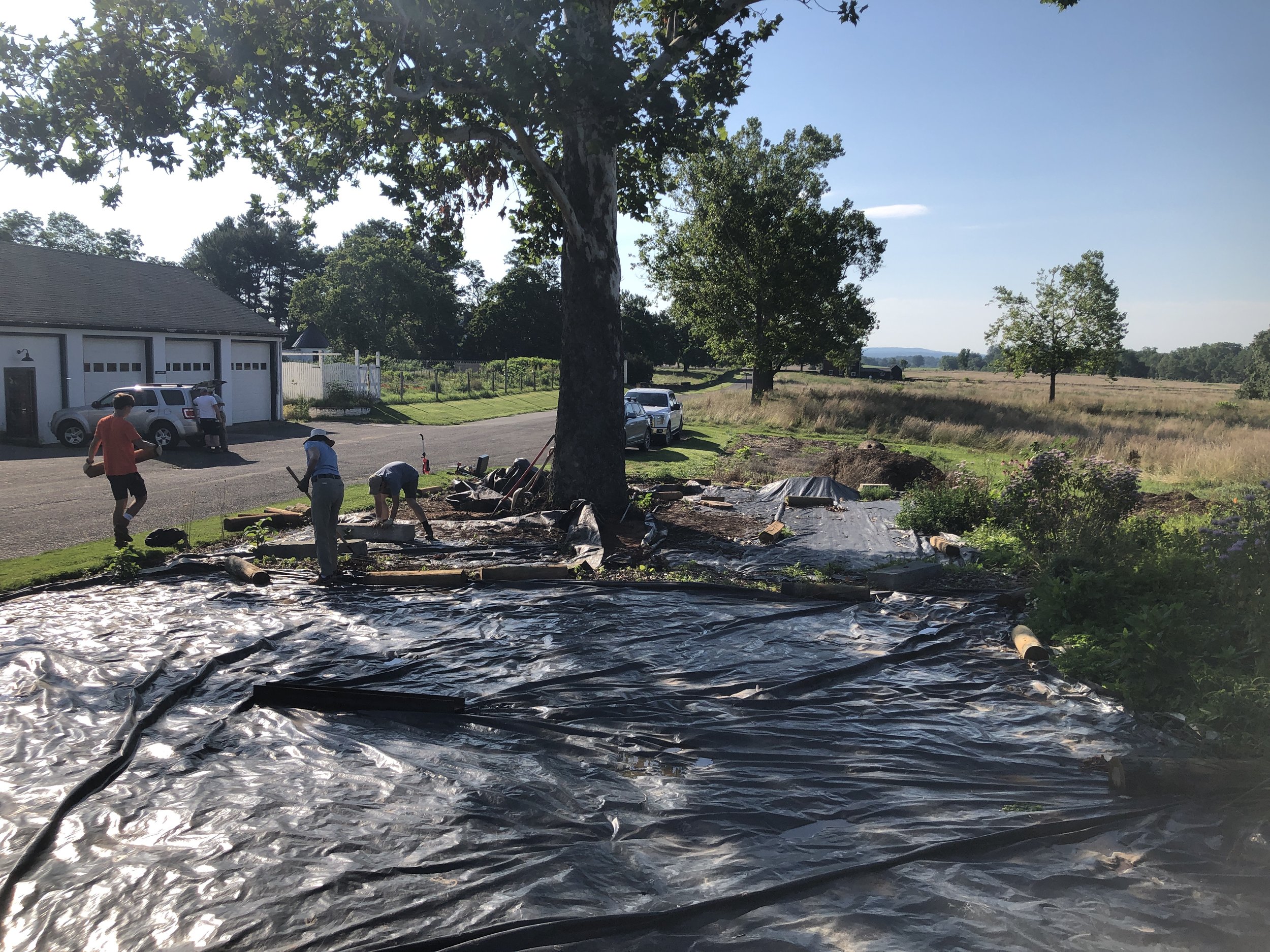
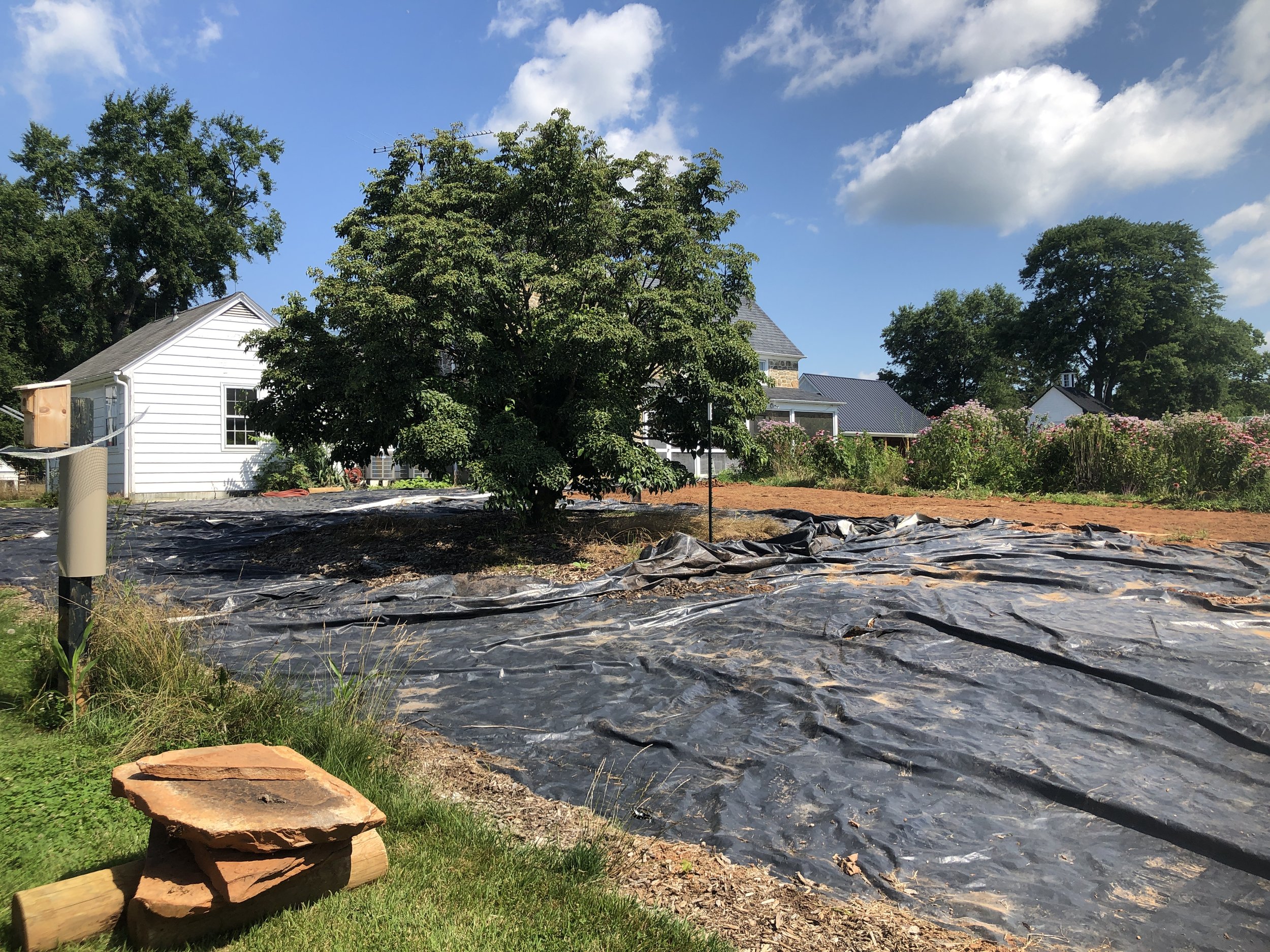
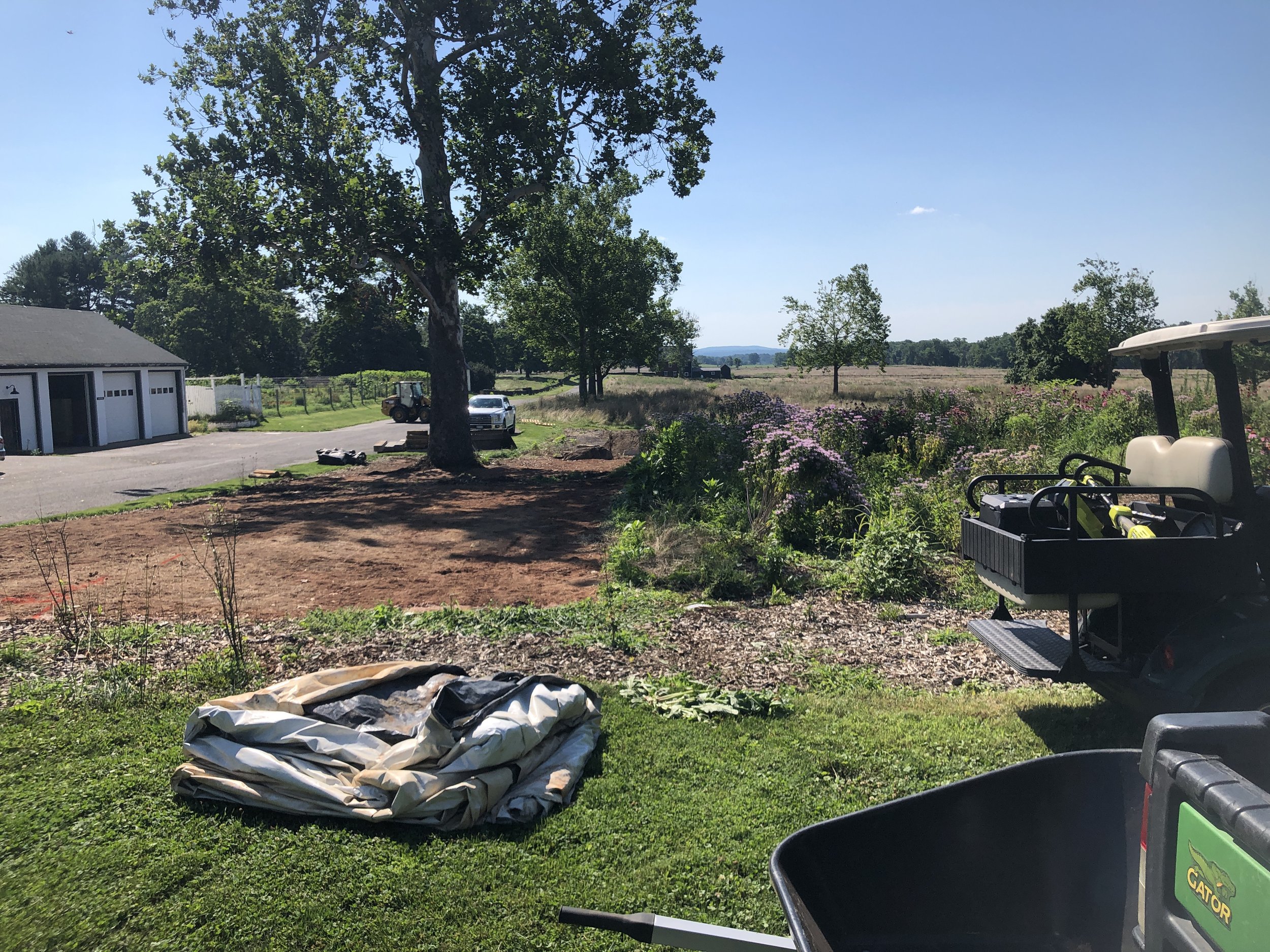
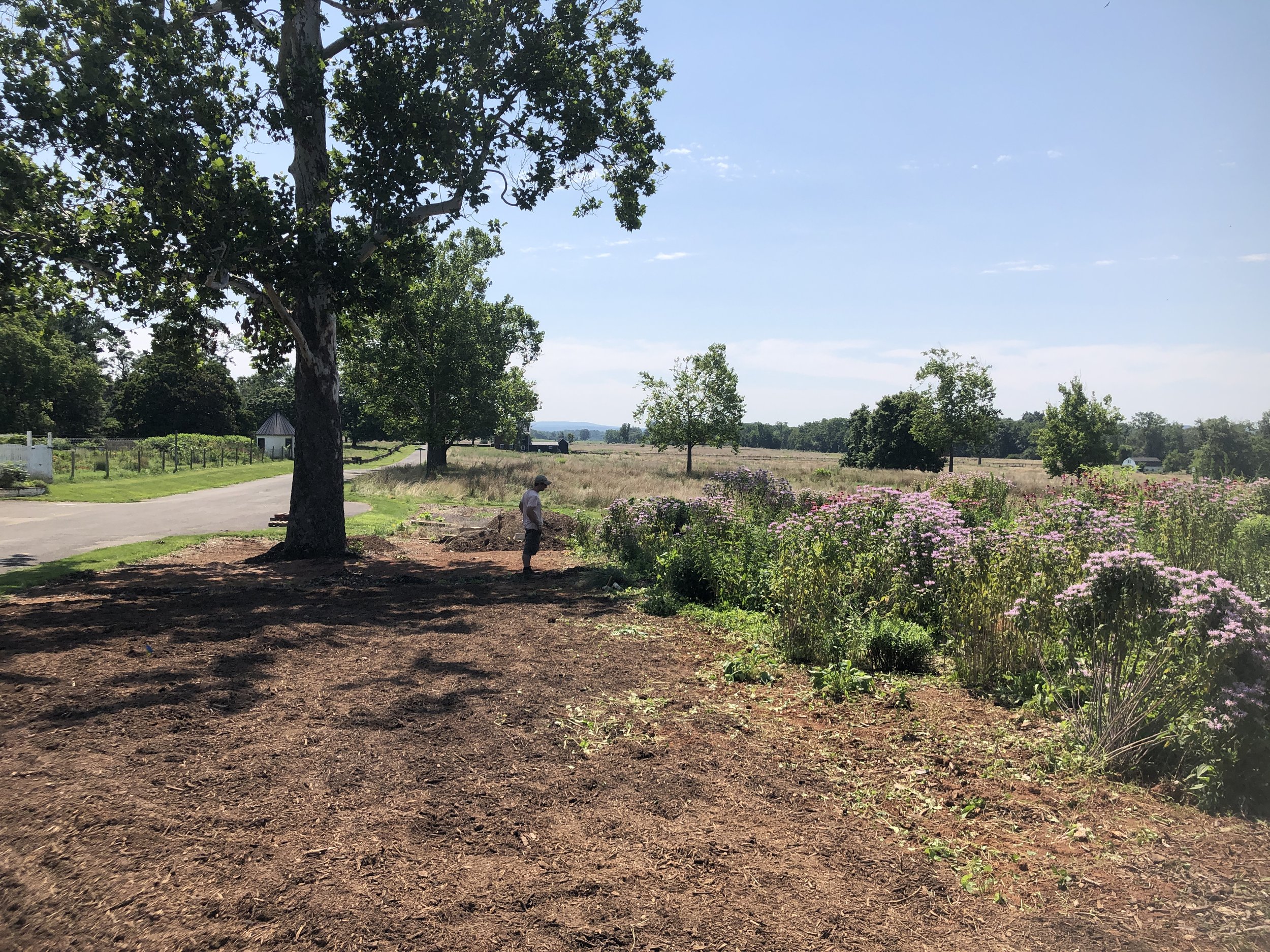
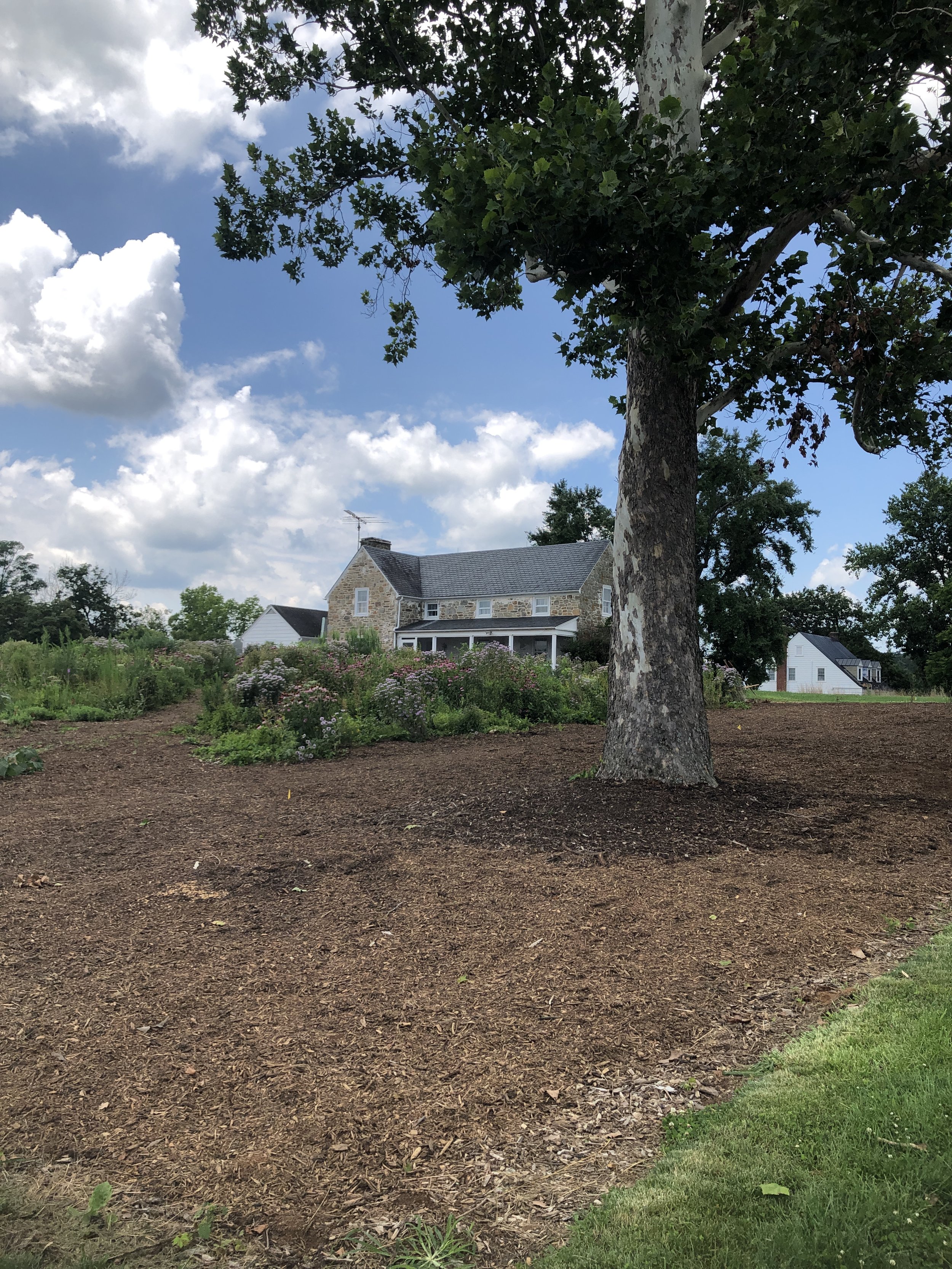
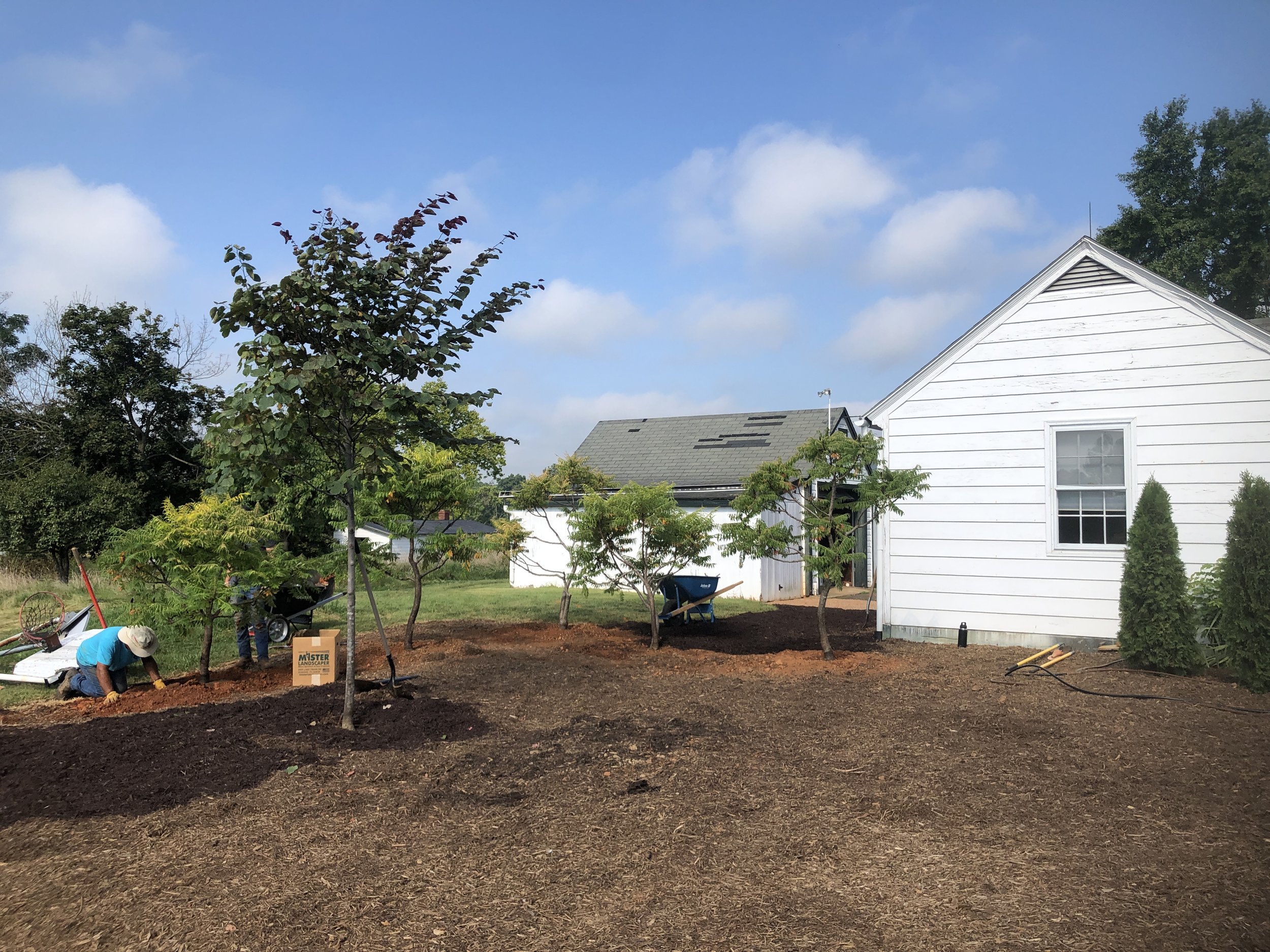


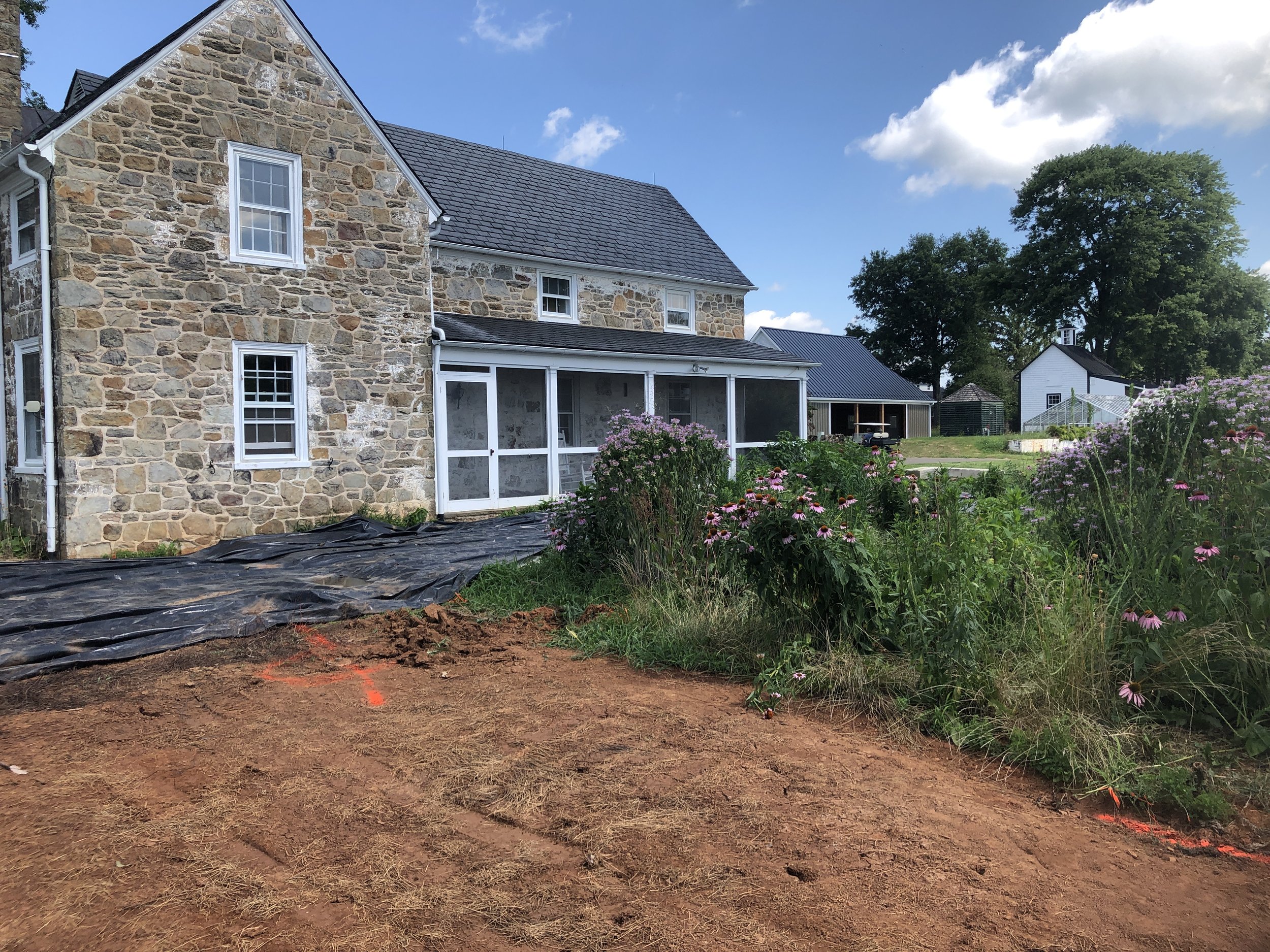
To now!
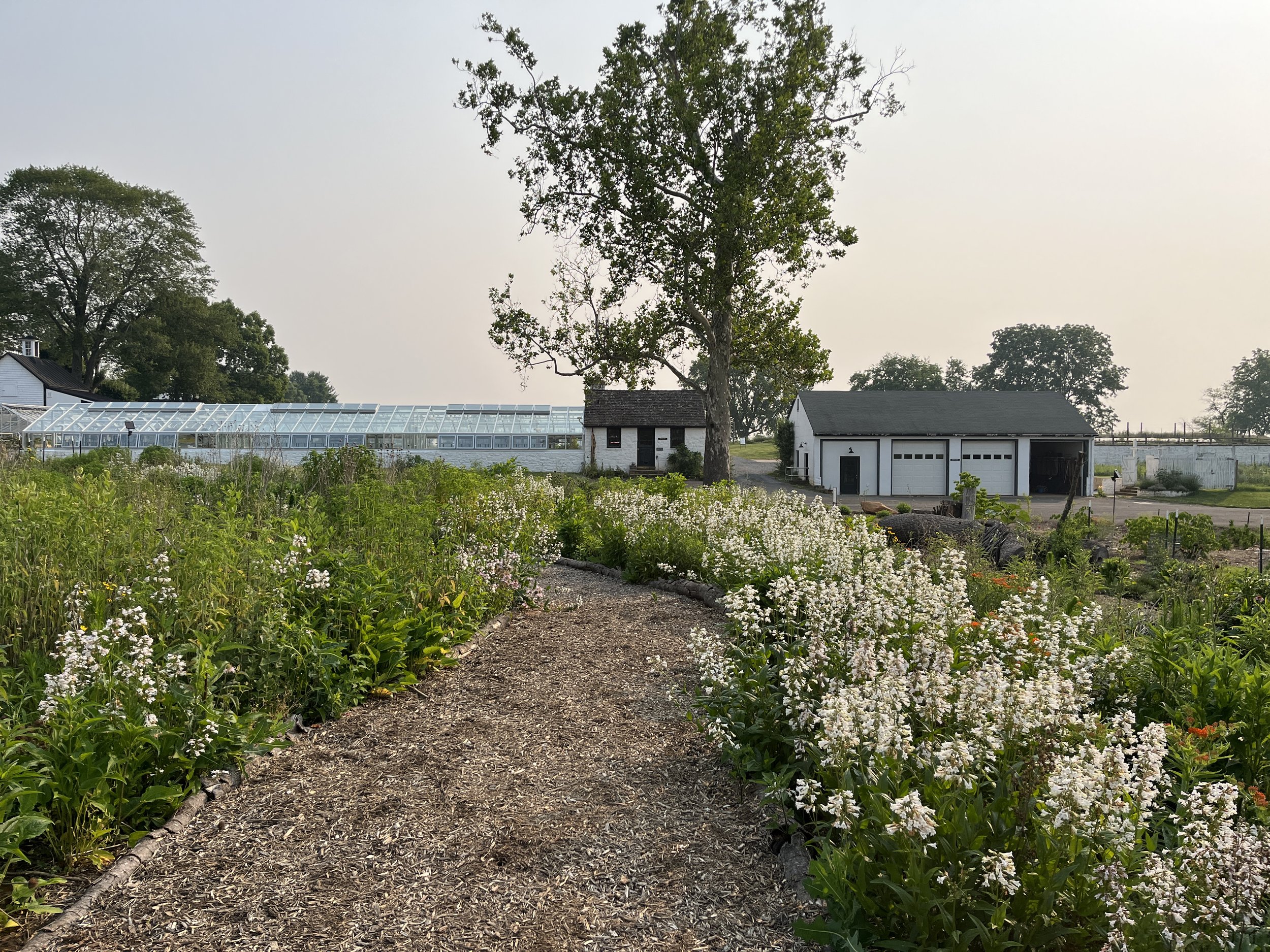
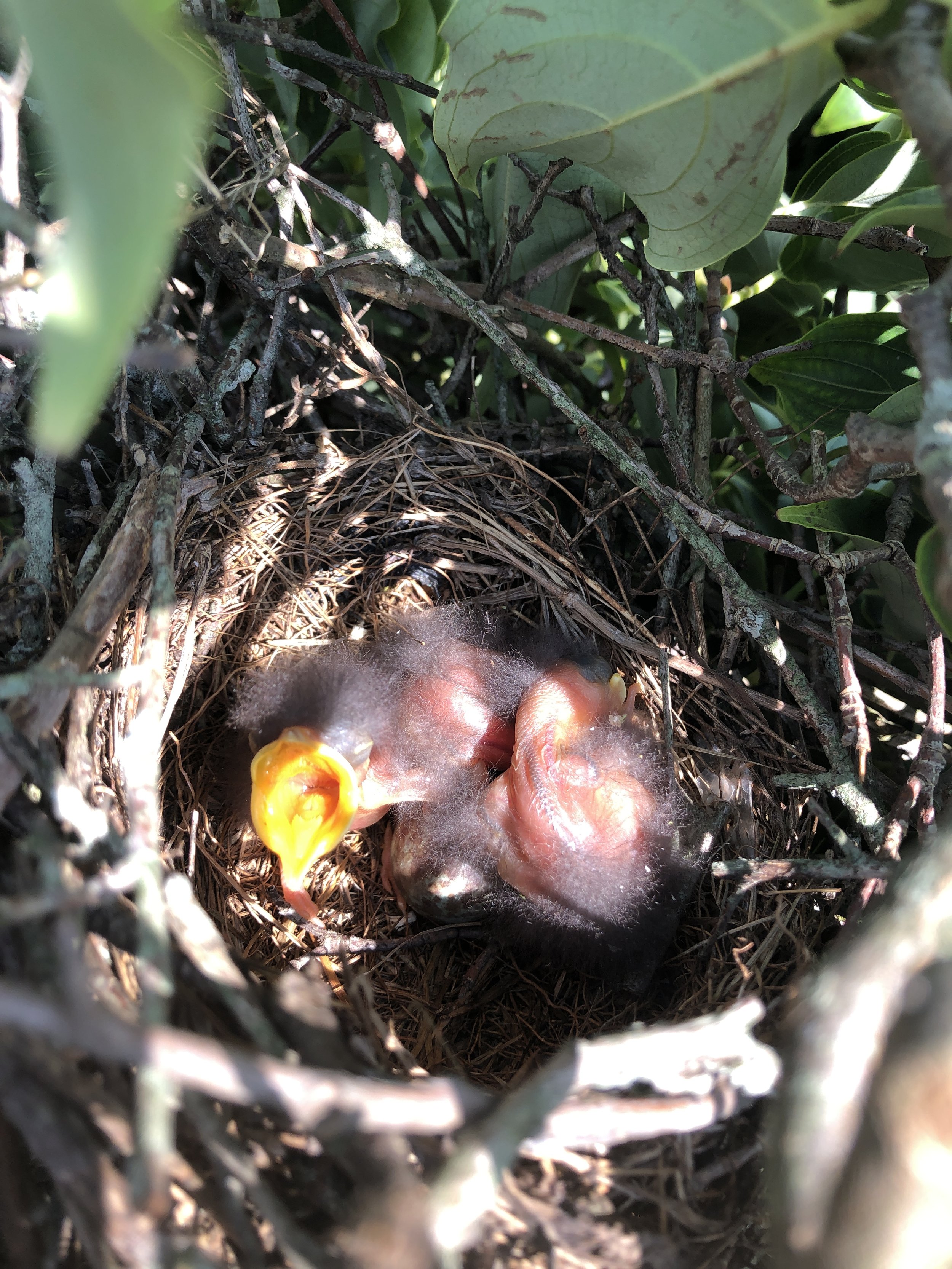
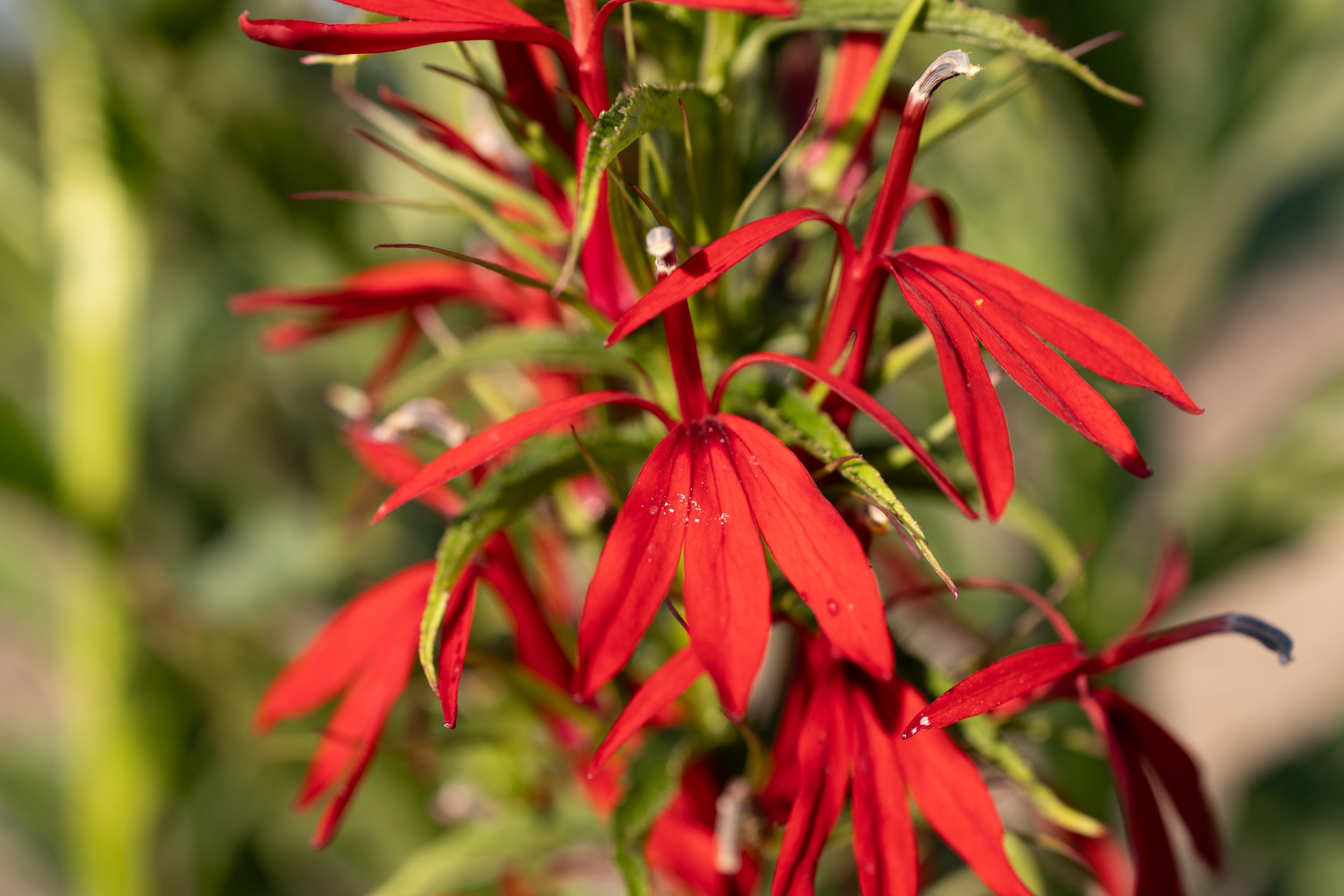
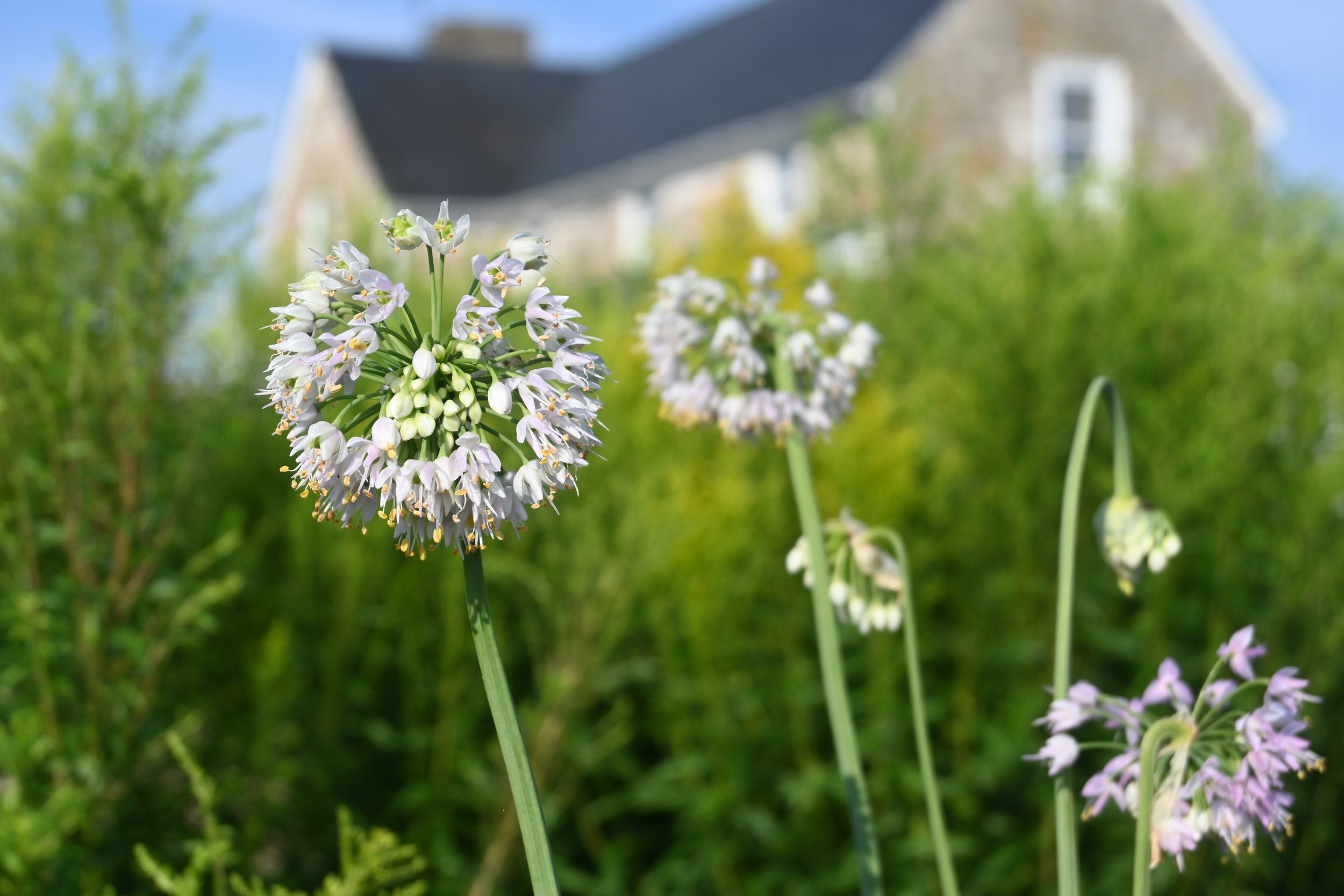
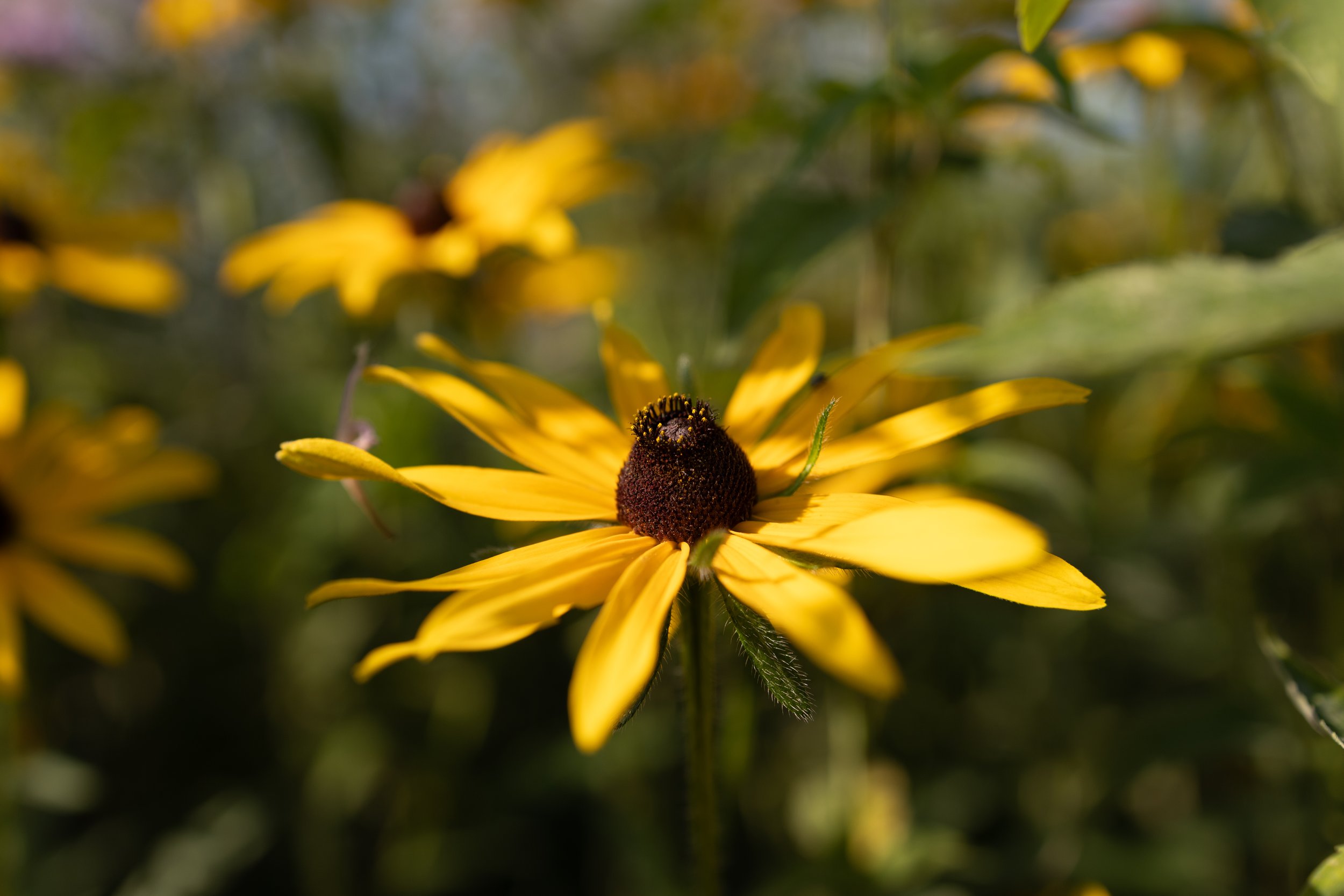
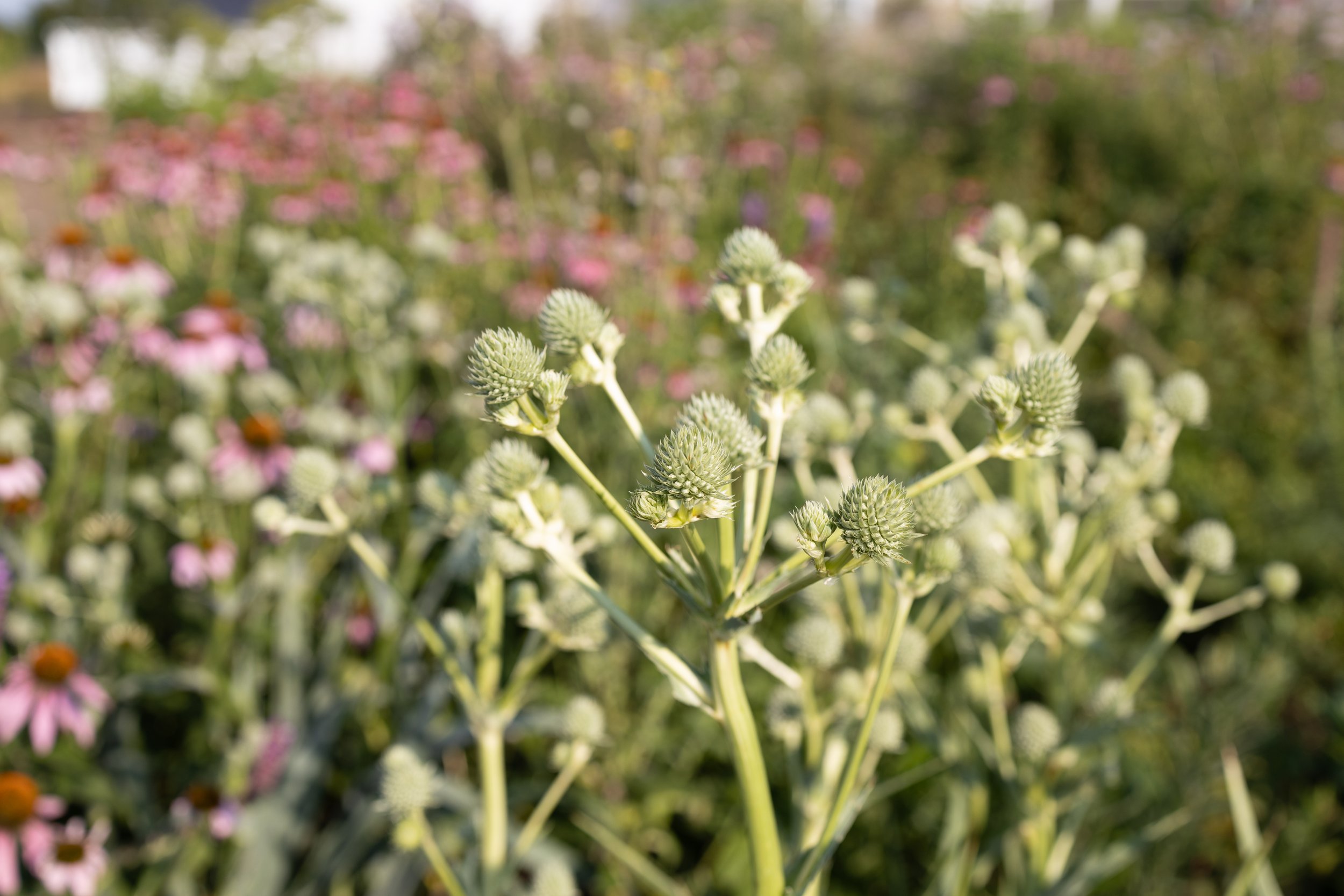


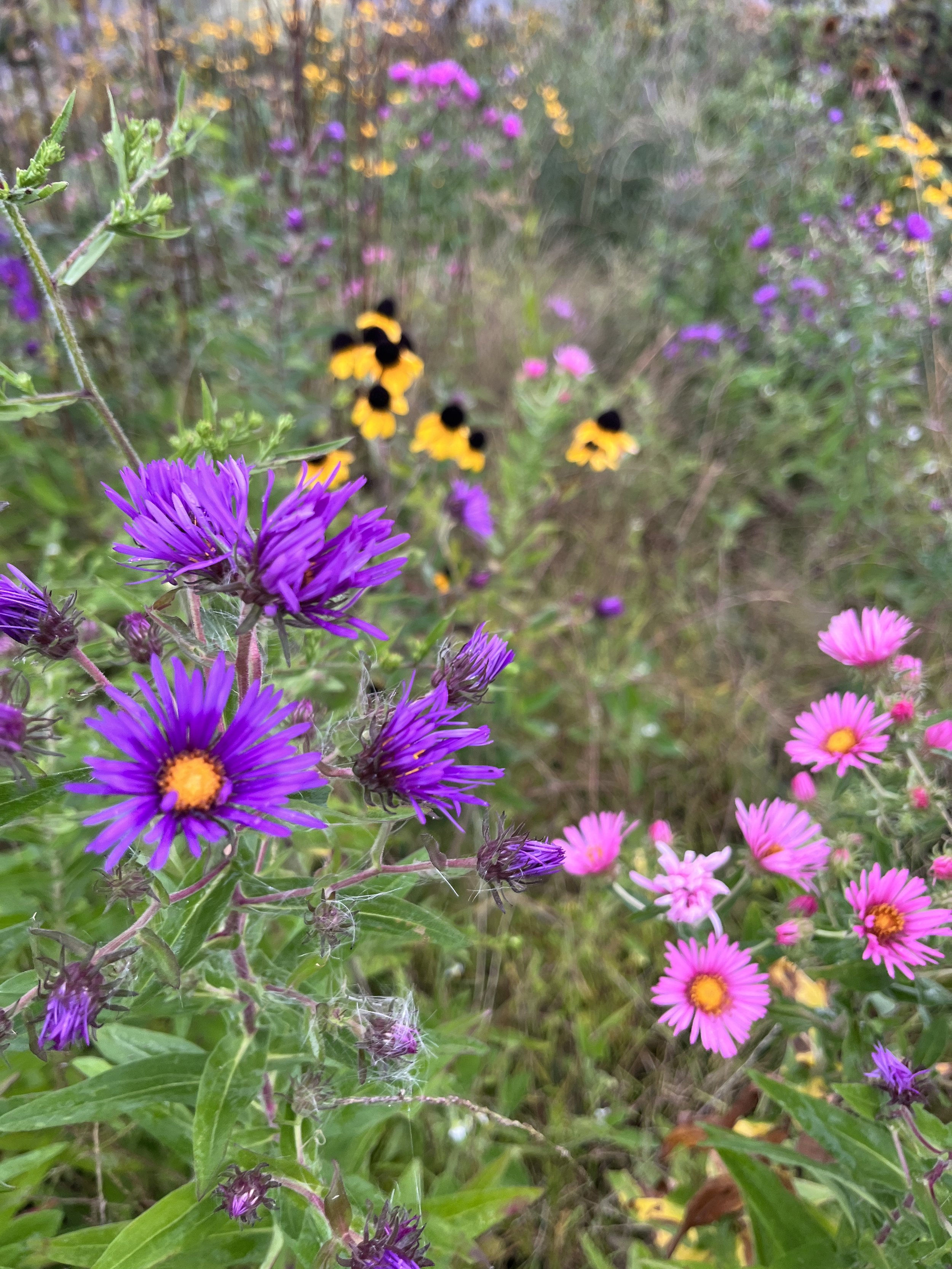
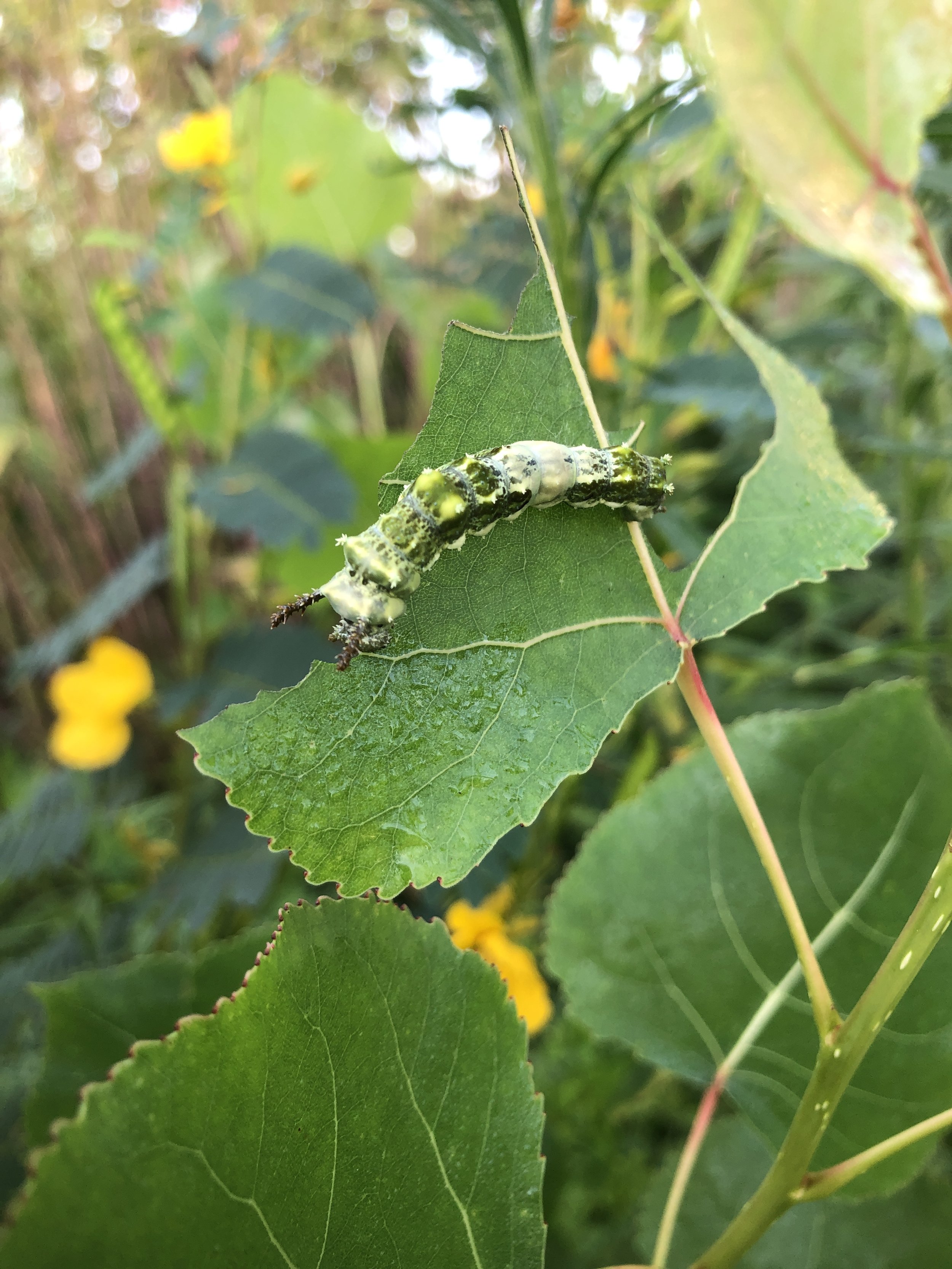
Creating your own Wildlife Garden
Some basic steps for developing your own garden include:
Define your goals. What are you hoping to achieve? What’s your aesthetic preference?
Get to know your land. What is already growing there? Assess the soils, sunlight, hydrology. This may be the most important step and should not be skipped.
Plant Selection
Selection is very site specific and depends on your initial land assessment (hydrology, soils, light).
Some factors to consider when selecting plants: height, bloom time, seasonal interest, wildlife resources.
Take a look at our RWG plant list to get some inspiration.
Planting
Timing for planting can be either in spring or fall. We like to plant in the fall as it gives the plants time to settle and establish roots over the winter and requires little to no irrigation.
Maintenance
Mindful, selective weeding is useful. Some volunteers can be very welcome and beneficial additions to the garden.
Leaving your beds tall over winter helps to support wildlife year round.
Observe and enjoy!
One other helpful tip is to seek out local native plant nurseries and ask for straight-species natives from your ecoregion and if possible, avoid hybrids and don’t plant invasives.
Perhaps the most important thing to remember, however…
Your garden is never “finished.” It is not static but rather a living and evolving ecosystem. It is a web of life and interactions. Part of the beauty is appreciating how it will change over time and participating in that evolution ourselves. As Mrs. Mellon put it, “Part of creating is understanding that there is always more to do; nothing is ever completely finished.” And thank goodness for that! Part of the magic of gardening is being out in it and getting our hands in the dirt, watching it unfold, observing all the fascinating insects and critters that it supports, and appreciating the excitement and beauty unfolding anew every single day.
This blog gave you some broad guidelines on getting started but if you are looking for a more deep-dive discussion on planning your wildlife garden, that includes resources, design pointers, and more in-depth step-by-step guidelines,
join us for our in-person workshop next February. Or come see the Rokeby wildlife garden for yourself on our Fall Open Days, happening September 22nd and 23rd.
All photos by Charlotte Lorick unless otherwise indicated.


